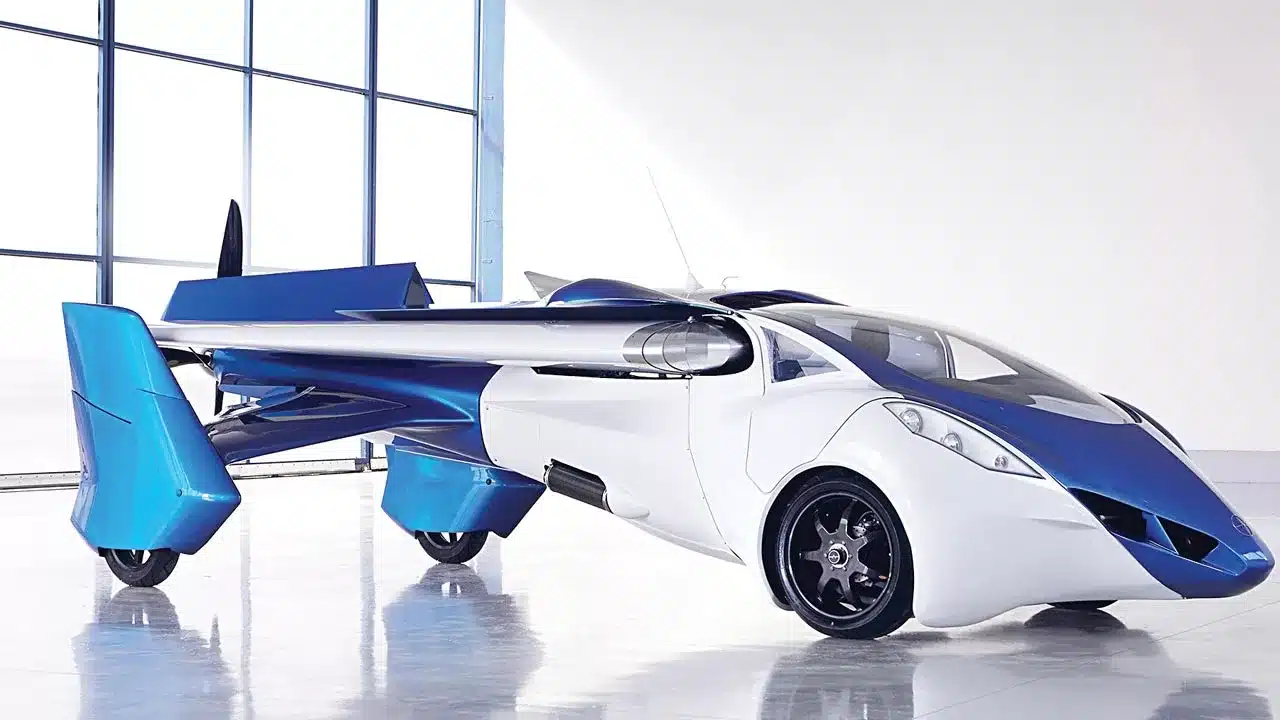
Recent developments in the field of autonomous passenger drones, such as the EHang EH216-S in China, suggest a significant step toward the realization of flying cars. This article explores the advancements, challenges, and historical context surrounding the concept of flying cars, considering factors ranging from technical feasibility to social acceptance.
Key Points:
EHang EH216-S Milestone: On December 28, 2023, Chinese firm EHang achieved a milestone by conducting the first commercial flight of an unmanned, autonomous passenger drone in Guangzhou. The EHang EH216-S, equipped with 16 rotors and an electric battery, showcased the potential for autonomous aerial transportation. The drone aims to be an airborne mode of transport as accessible as an automobile.
Technical Limitations: While the EH216-S represents a notable achievement, it comes with technical limitations. The drone has a range of only 22 miles and a top speed of 81 mph, raising questions about its practicality for longer-distance travel. Additionally, the two-passenger capacity falls short compared to traditional helicopters.
Comparison with Traditional Helicopters: Contrasting the EH216-S with traditional helicopters like the Robinson R44 reveals disparities in range, speed, and passenger capacity. Despite being quieter and more environmentally friendly, the EH216-S must address these limitations to become a viable alternative on a broader scale.
Historical Context – Autogyros: The article delves into the historical context of flying cars, citing the autogyro as an early example. Developed in the 1930s by aviation pioneers Juan de la Cierva and Harold Pitcairn, autogyros combined elements of helicopters and airplanes, with the ability to travel on roadways. However, historical events such as the Depression and World War II impacted their widespread adoption.
Technological Progress vs. Social Acceptance: J. Storrs Hall’s book, “Where Is My Flying Car?” explores the paradox of technological progress versus societal acceptance. The article contends that while technical barriers may have been overcome, cultural reactions and regulatory constraints have impeded the transition to a world of flying cars.
Social Barriers and Regulatory Ossification: The author emphasizes that social barriers and regulatory challenges, rather than technical limitations or cost, have been the primary obstacles to realizing flying cars. Cultural reactions, fears related to energy, and regulatory frameworks have hindered the normal flow of experimentation in high-power technology.
EHang and Competitors: Acknowledging EHang’s achievement, the article mentions other players in the field, including Joby, Wisk Aero, and LIFT’s Hexa. These companies contribute to the progress in autonomous aerial transportation and underscore the potential societal shift toward flying cars.
EHang EH216-S Limitations and Market Sentiments: Concerns about the EH216-S’s short range and market competitiveness are highlighted. Market sentiments and risks associated with public confidence in self-flying air taxis, particularly after potential accidents, are discussed.
Cultural Perception of Flying Cars: The author concludes by emphasizing that the dream of a world full of flying cars is contingent not only on technological and economic feasibility but also on societal willingness and acceptance. The question posed is whether society truly desires a future with flying cars.
The recent success of EHang’s autonomous passenger drone marks a significant step toward the realization of flying cars. However, technical limitations, historical insights into early attempts with autogyros, and social barriers underscore the complexities of transitioning to a world where flying cars are commonplace. The article emphasizes the need for societal acceptance, addressing regulatory challenges, and overcoming historical setbacks to pave the way for a future with flying cars.
Related posts:
 Indian State Government Resolves Website Bugs Exposing Residents’ Sensitive Documents
Indian State Government Resolves Website Bugs Exposing Residents’ Sensitive Documents
 Sony’s State of Play event revealed an exciting lineup of upcoming games for the PlayStation 5
Sony’s State of Play event revealed an exciting lineup of upcoming games for the PlayStation 5
 Garmin Forerunner 255 GPS Running Smartwatch Review: Advanced Insights and Unmatched Battery Life
Garmin Forerunner 255 GPS Running Smartwatch Review: Advanced Insights and Unmatched Battery Life
 OpenAI Challenges LinkedIn with Revolutionary AI-Powered Recruitment Platform
OpenAI Challenges LinkedIn with Revolutionary AI-Powered Recruitment Platform




Leave a Comment
You must be logged in to post a comment